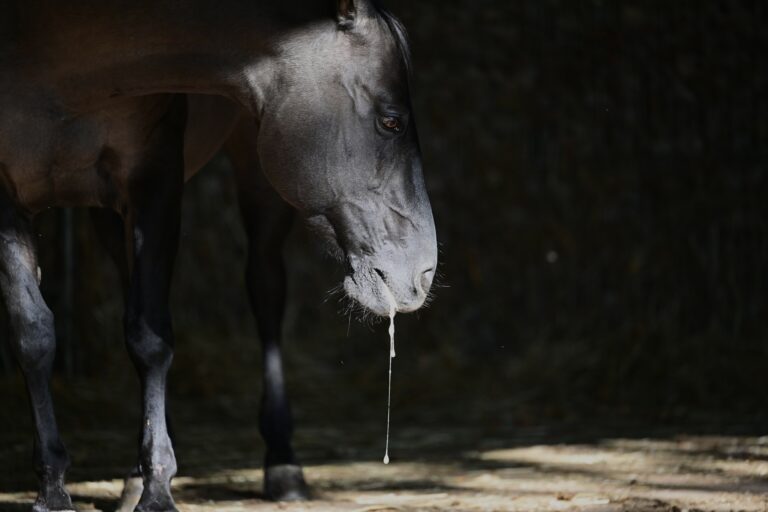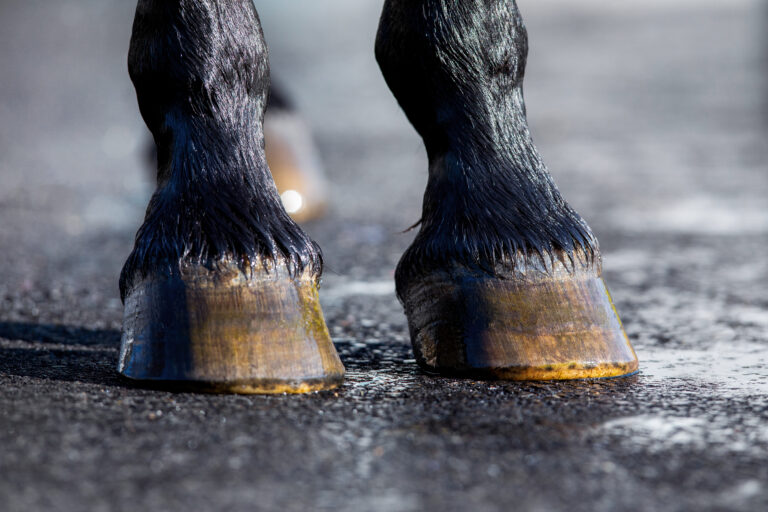
In this episode of the Disease Du Jour podcast, Johanna Kremberg, DVM, joined us to discuss equine prepurchase exams. She explained the main components of a prepurchase exam, offered suggestions for managing conflicts of interest, discussed diagnostic imaging packages, and more.
Main Components of an Equine Prepurchase Exam
When Kremberg arrives at a farm to perform a prepurchase exam, she prefers to have her staff bring the horse in or out of its stall so she can see it in its natural setting. She watches the horse in the crossties and performs a static examination, which includes looking in the horse’s eyes. Next, she performs the movement examination, both in hand and under saddle.
Who Should Be Involved in Decision-Making for Equine Prepurchase Exams?
Multiple parties are usually involved when performing an equine prepurchase exam, said Kremberg, including the buyer, the buyer’s agent or trainer, the seller, and the seller’s agent or trainer. To navigate these situations, she issues prepurchase paperwork to both the buyer and the buyer’s agent, where they can note which diagnostics they would like her to perform based on cost and proposed use of the horse.
Navigating Conflicts of Interest
Conflicts of interest are “all too common,” Kremberg said. “So the few clients that I work for that sell a high volume of horses, I have graciously stepped away from doing any of their purchase exams.”
Sometimes, a trainer would like to sell a horse to a client, and the veterinarian currently works for both parties. “We always disclose that conflict of interest and have both of them aware of the conflict,” Kremberg said. “But when it’s going to be us taking care of the horse going forward, then we are certainly interested in having input on that purchase.” In those situations, she feels comfortable moving forward as long as the horse’s full medical record is open.
However, in cases where Kremberg knows the seller or case too well and would have a difficult time being objective, she steps away. “We have had enough situations where I would rather never have stepped into those murky waters and have chosen not to step into them to start,” she said.
What Documentation Should the Veterinarian Provide the Buyer?
Kremberg said it’s important to provide the buyer with information before the night’s end. She said recordkeeping is critical, and she starts transferring her notes into the report shortly after the exam. The record should include the horse’s registered name, breeding, height, color, sex, reported age, passport age, microchip, and markings. It should also include pictures of any findings from the exam with thorough yet succinct notes. She sends this report to the buyer, buyer’s agent or trainer, and sometimes the buyer’s veterinarian that evening before making further notes on the imaging as needed.
Kremberg often sends radiographs to a radiologist for a second opinion, which can take 24-48 hours to get back. Lab work from toxicology screens can also take 24-48 hours.
“Get that information to the client as soon as possible, because the money is burning a hole in their pocket,” Kremberg said. She conducts almost all communications via email so everything is easily traceable.
Objective Lameness Assessment Tools for Equine Prepurchase Exams
Kremberg said her practice now utilizes inertial sensors for all prepurchase examinations. “I do think it’s really helpful to have an objective analysis of the horse,” she said. She reminds clients that no horse is symmetric and no assessment is perfect; the tool simply helps quantify the horse’s asymmetry that day. Kremberg said inertial sensor readings are also very helpful when interpreting an outside practitioner’s prepurchase exam findings.
Prepurchase Radiographs and Ultrasounds
Kremberg’s practice offers prepurchase radiograph packages that cover some of the most critical areas of the horse, including front feet, fetlocks, hocks, stifles, knees, neck, and back. She noted different populations will want more specific radiographs, but she said the package option encourages clients not to cut corners. She is a stickler about removing shoes for navicular radiographs, and she also ensures all radiographs have markers. She sends most radiographs to Inside Information for a second opinion from a radiologist.
Kremberg doesn’t ultrasound every case but bases the decision on palpation, lameness, radiographic findings, and value of the horse. She often ultrasounds the suspensory branches when there are palpation or lameness findings on the exam, as well as old bowed tendons, superficial digital flexor tendons, and check ligaments.
Protecting Yourself From Legal Issues
Kremberg explained one of the reasons PLIT dues and premiums are so high for equine veterinarians is because they are facilitating transactions of sometimes very large amounts of money for horses. They often make or break the buyer’s decision, so they must be very clear with clients about what they’re buying.
“There is no perfect specimen, but we need to make sure that we are disclosing all that we find and we are going through radiographs with a fine-tooth comb and then having a radiologist’s second opinion,” she said. Having a second set of eyes on your images and having the radiologist write their own separate report is one great way for veterinarians to protect themselves.
Kremberg also clearly states in her report what medical history, vaccine dates, and passport information was disclosed. She notes any unknown medical history about the horse. She includes a comment at the end of the documentation about whether the seller or seller’s agent is a client or previous client of the practice. If the seller is not a client, she also includes a statement that the horse has not been attended to by herself or any veterinarian in the practice.
“I think as long as everything is documented very clearly and completely on your report, you’re protecting yourself quite a lot,” she said.
About Dr. Johanna Kremberg
Johanna Kremberg, DVM, grew up in Brunswick, Maine, riding horses at every opportunity. She majored in English Literature and Spanish at Middlebury College, where she was the captain of the varsity lacrosse team. After her time in Vermont, she worked in botulinum research at Tufts University while she applied to veterinary school.
In 2010, Kremberg graduated from the Ohio State University College of Veterinary Medicine and spent the following year in a rotating large animal internship at the University of Georgia. At Ohio State, she received the “Excellence in Equine Surgery” award and was chosen as the 2009 AAEP/Hiscox Insurance scholarship recipient.
Kremberg appreciates all aspects of maintaining the equine athlete and excels in endoscopy, ultrasound-guided injection techniques, and preventive medicine. She is a veterinarian at Grand Prix Equine in West Bedford, New York.
Dr. Kremberg can be reached at jkremberg@grandprixequine.com.
Related Reading
- 10 Radiographic Prepurchase Abnormalities in Sport Horses
- Disease Du Jour: Equine Radiography in the Field
- The Business of Practice: Equine Sports Medicine Practices
Stay in the know! Sign up for EquiManagement’s FREE weekly newsletters to get the latest equine research, disease alerts, and vet practice updates delivered straight to your inbox.




